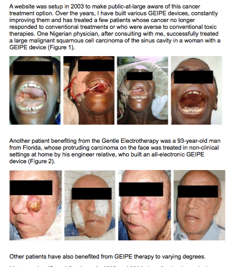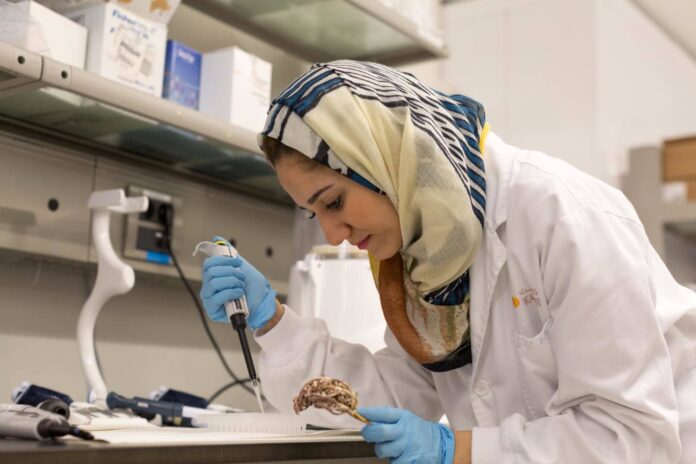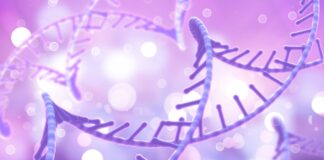A non-toxic and effective scientific cancer treatment has been languishing for more than 20 years because it cannot be patented and is very low-cost.
It is true! What follows is the story of this cancer therapy. Uncontrolled cell growth is cancer. For one cell to grow into two, it must replicate its DNA strand.
The building blocks of this strand’s four bases are in short supply in a healthy, resting cell.
However, the building blocks of a related molecule, RNA, are always present in great abundance since RNA is needed for many cellular functions.
 When a cell is ready to divide, an enzyme called Ribonucleotide Reductase (RR) converts the building blocks provided by RNA into those of DNA.
When a cell is ready to divide, an enzyme called Ribonucleotide Reductase (RR) converts the building blocks provided by RNA into those of DNA.
The RR enzyme is thus pivotal for cellular growth. Not surprisingly, the activity of this enzyme is tightly linked, much more so than any other enzyme, to cancerous growth.
Cancer researchers have tried to arrest the activity of this enzyme by using various chemotherapeutic drugs.
However, such drugs are of limited use since their inhibition of enzymatic activity is only partial, and there are many undesirable toxic side effects.
A novel way of arresting the activity of this pivotal enzyme in cell growth is suggested by the fact that the active site of RR contains a stable free-radical (unpaired electron) which is essential for its activity.
Such free radicals can be disabled or quenched (paired-up) by free-floating electrons easily available in the form of direct electric current. Thus, low-level direct current (DC) electrotherapy should have a curative effect on cancer.
This therapy is sometimes called Gentle Electrotherapy to Inhibit a Pivotal Enzyme (GEIPE). The GEIPE treatment would act selectively on cancerous growth since the concentration of the target enzyme RR is much higher in cancerous cells than healthy resting cells.

All this is not just theoretical conjecture. The first account of treating cancer with the mild current was published in the highly regarded journal Science in 1959, which reported: “total regression” of tumor in 60% of mice.
Even more remarkably, an article in the esteemed journal Cancer Research in 1985 reported up to 98% tumor-shrinkage virtual cure after only 5 hours of gentle electrotherapy over 5 days.
None of these investigators knew about the possible mechanism involving the deactivation of the RR enzyme.
When I contacted the lead author of the 1985 study in 1995, he was receptive to my ideas about enzyme RR’s role and told me that he could not get funding for follow-up studies. We together were also unsuccessful in getting a grant.
I have contacted all major cancer institutions worldwide, often more than once. Most of them do not respond or reply evasively (“we don’t have facilities to study this treatment”, even though the money required to set up a facility to explore this treatment would cost less than what is often spent on one cancer patient.)
The National Cancer Institute and M.D. Anderson Cancer Center, Houston did reply to my first letter in 1994. They both found the cancer electrotherapy idea “very interesting” and deserve further investigation.
However, neither wanted to initiate any studies. Who set up a website in 2003 to make the public-at-large aware of this cancer treatment option.
Over the years, I have built various GEIPE devices, constantly improving them and have treated a few patients whose cancer no longer responded to conventional treatments or who were averse to conventional toxic therapies.
After consulting with me, one Nigerian physician successfully treated a large malignant squamous cell carcinoma of the sinus cavity in a woman with a GEIPE device (Figure 1).
Another patient benefiting from the Gentle Electrotherapy was a 93-year-old man from Florida, whose protruding carcinoma on the face was treated in non-clinical settings at home by his engineer relative, who built an all-electronic GEIPE device (Figure 2).
Other patients have also benefited from GEIPE therapy to varying degrees.
My two scientific publications, in 1997 and 2014, describe the theoretical basis of this (GEIPE) cancer treatment along with ample supporting experimental evidence, with both animals and humans:
It is not hard to see why this non-toxic and effective scientific cancer treatment faces immense resistance. Self-preservation!
An un-patentable, dirt-cheap therapy, almost a home remedy, is not what cancer researchers and clinicians dream of. This treatment would cripple the cash flow of cancer hospitals. Chemo and radiation oncologists don’t want to lose their jobs, do they?
We need to start a grass-roots movement of concerned citizens, cancer patients, journalists and elected representatives. They should ask cancer institutions why this scientific, non-toxic and effective cancer treatment is not established.
A final note: This cancer therapy should apply to all cancers since malignant cells in any tissue need to synthesize their DNA to grow. At the molecular level, cancer is a single disease!
- Fitbit Joining Hands with Google to Fuse User-Generated Data with EMRs!
- The Age of Customized Healthcare
- 4 Tips for Selecting a Reputable Rehab Facility
For More Latest Health NEWS Updates and Information about Cancer Treatment, Visit Ehealth Spider and Follow Us on Facebook.











